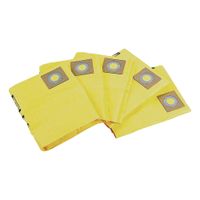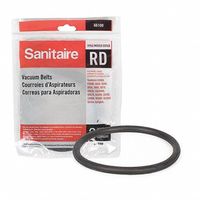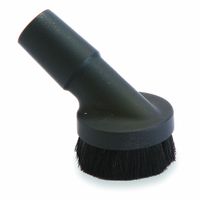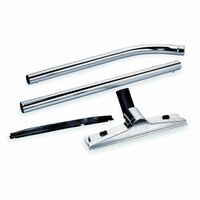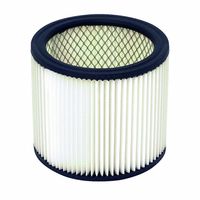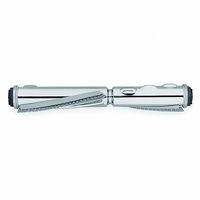Call +(254) 703 030 000 / 751 483 999 / 721 704 777
- Home
- Cleaning And Janitorial
- Floor Cleaning Machines
- Vacuum Cleaners Accessories
- Vacuum Accessories Attachments Parts
.....Read More
Frequently Asked Questions
What are the essential vacuum cleaner attachments?
Essential vacuum cleaner attachments include:
1. **Crevice Tool**: A narrow nozzle designed to reach tight spaces, corners, and edges, perfect for cleaning between cushions and along baseboards.
2. **Dusting Brush**: Features soft bristles to gently remove dust from delicate surfaces like lampshades, blinds, and shelves without scratching.
3. **Upholstery Tool**: A wide, flat attachment with a fabric strip or small bristles, ideal for cleaning furniture, mattresses, and curtains by removing dust, pet hair, and lint.
4. **Extension Wand**: A rigid or telescopic tube that extends the reach of the vacuum, useful for cleaning high or hard-to-reach areas like ceilings and fans.
5. **Floor Brush**: A wide attachment with soft bristles for cleaning hard floors without scratching, often featuring a swivel head for maneuverability.
6. **Motorized Brush Head**: Equipped with a rotating brush roll, this attachment is effective for deep-cleaning carpets by agitating and lifting embedded dirt and hair.
7. **Pet Hair Tool**: Specifically designed to remove pet hair from upholstery and carpets, often featuring rubber bristles or a motorized brush.
8. **Mattress Tool**: A flat, wide attachment that effectively removes dust mites and allergens from mattresses and bedding.
9. **Turbo Brush**: A smaller, air-driven brush roll attachment for cleaning stairs, upholstery, and car interiors, providing extra agitation for dirt removal.
10. **Hard Floor Tool**: Designed for hard surfaces, it often has a soft brush or felt strip to prevent scratching while picking up fine dust and debris.
These attachments enhance the versatility and efficiency of a vacuum cleaner, allowing it to tackle various cleaning tasks and surfaces effectively.
How do I choose the right vacuum replacement parts?
1. **Identify the Model and Brand**: Check the vacuum cleaner's model number and brand. This information is usually found on a label on the vacuum itself.
2. **Consult the Manual**: Refer to the user manual for part numbers and specifications. If you don't have a physical copy, many manufacturers provide digital versions online.
3. **Determine the Part Needed**: Identify which part needs replacement—filters, belts, bags, hoses, or brushes. Each has specific requirements.
4. **Check Compatibility**: Ensure the replacement part is compatible with your vacuum model. Use the model number to search for compatible parts.
5. **Consider OEM vs. Aftermarket**: Decide between Original Equipment Manufacturer (OEM) parts, which are made by the vacuum's manufacturer, and aftermarket parts, which are often cheaper but may vary in quality.
6. **Read Reviews**: Look for reviews of the replacement parts to gauge quality and performance. User feedback can provide insights into durability and fit.
7. **Compare Prices**: Shop around to compare prices from different retailers. Consider online stores, local appliance stores, and the manufacturer's website.
8. **Check Warranty and Return Policy**: Ensure the parts come with a warranty or return policy in case they are defective or incompatible.
9. **Seek Professional Advice**: If unsure, consult a professional or contact the manufacturer’s customer service for guidance.
10. **Purchase from Reputable Sources**: Buy from trusted retailers or directly from the manufacturer to avoid counterfeit parts.
By following these steps, you can ensure you select the right vacuum replacement parts that will maintain the performance and longevity of your appliance.
Can vacuum accessories fit different brands?
Vacuum accessories can fit different brands, but compatibility depends on several factors. Many vacuum manufacturers design their accessories with proprietary fittings, meaning they are specifically tailored to fit their own models. However, there are also universal accessories available that are designed to fit a range of brands and models.
The key to determining compatibility is the connection type. Most vacuum accessories attach via a hose or wand, and the diameter of these connections is crucial. Common sizes include 1.25 inches (32 mm) and 1.5 inches (38 mm), which are often used in universal accessories. If the accessory and the vacuum have matching connection sizes, they are likely to be compatible.
Adapters are another solution for cross-brand compatibility. These small devices can bridge the gap between different connection sizes or types, allowing accessories from one brand to fit another brand's vacuum. Some third-party manufacturers produce a wide range of adapters to facilitate this.
It's also important to consider the type of accessory. Basic tools like crevice tools, dusting brushes, and upholstery nozzles are more likely to be interchangeable, especially if they have standard connection sizes. However, more specialized accessories, such as motorized brush heads or those with electronic components, may require specific power connections or controls that are not compatible across different brands.
In summary, while many vacuum accessories can fit different brands, it is essential to check the connection size and type, and consider using adapters if necessary. Universal accessories and third-party options can increase compatibility, but specialized tools may still require brand-specific solutions.
How often should vacuum parts be replaced?
Vacuum parts should be replaced based on their type and usage frequency:
1. **Filters**: Replace HEPA filters every 6-12 months, depending on usage and manufacturer recommendations. Foam and felt filters should be cleaned every 1-3 months and replaced every 6 months to a year.
2. **Belts**: Vacuum belts should be checked regularly for wear and replaced every 6 months to a year, or sooner if they show signs of damage or if the vacuum's performance decreases.
3. **Brush Rollers**: Inspect brush rollers every few months for hair and debris buildup. Replace them every 1-2 years, or sooner if bristles are worn or damaged.
4. **Bags**: For bagged vacuums, replace the bag when it is two-thirds full to maintain suction power. This could be every 1-2 months, depending on usage.
5. **Hoses**: Check hoses for cracks or blockages regularly. Replace them if they are damaged or if suction is consistently weak, typically every 2-3 years.
6. **Battery**: For cordless vacuums, replace the battery every 2-3 years, or when it no longer holds a charge effectively.
7. **Motor**: Vacuum motors generally last several years but should be replaced if the vacuum loses power or makes unusual noises, typically after 5-10 years.
Regular maintenance, such as cleaning filters and brush rollers, can extend the life of these parts. Always refer to the vacuum's user manual for specific replacement guidelines and intervals.
What is the best way to clean vacuum attachments?
1. **Detach Attachments**: Remove all attachments from the vacuum cleaner.
2. **Initial Dust Removal**: Shake off loose dust and debris into a trash bin or outside.
3. **Soak in Soapy Water**: Fill a basin with warm water and add a few drops of mild dish soap. Submerge the attachments and let them soak for 15-20 minutes.
4. **Scrub**: Use a soft brush or cloth to scrub the attachments, focusing on crevices and bristles. For stubborn dirt, use a toothbrush.
5. **Rinse**: Rinse thoroughly under running water to remove soap residue.
6. **Disinfect**: If desired, wipe down with a cloth dampened with a mixture of equal parts water and white vinegar for disinfection.
7. **Dry**: Allow attachments to air dry completely on a towel. Ensure no moisture remains to prevent mold growth.
8. **Reassemble**: Once dry, reattach to the vacuum cleaner.
Where can I buy vacuum cleaner parts and accessories?
1. **Manufacturer's Website**: Check the official website of the vacuum cleaner brand for parts and accessories. Brands like Dyson, Hoover, and Shark often have dedicated sections for replacement parts.
2. **Online Retailers**: Websites like Amazon, eBay, and Walmart offer a wide range of vacuum cleaner parts and accessories. They often have customer reviews and ratings to help you choose the right product.
3. **Specialty Stores**: Websites like Vacuum-Direct.com and PartsWarehouse.com specialize in vacuum cleaner parts and accessories, offering a comprehensive selection for various brands and models.
4. **Local Appliance Stores**: Visit local appliance or home improvement stores like Home Depot or Lowe’s. They often carry parts for popular vacuum cleaner brands.
5. **Authorized Service Centers**: Contact authorized service centers for your vacuum cleaner brand. They can provide genuine parts and may offer installation services.
6. **Third-Party Retailers**: Stores like Best Buy and Target may carry parts and accessories for popular vacuum cleaner models.
7. **Online Marketplaces**: Platforms like Craigslist or Facebook Marketplace can be useful for finding second-hand parts or accessories at a lower cost.
8. **Vacuum Repair Shops**: Local vacuum repair shops often sell parts and can provide expert advice on what you need.
9. **Direct from Manufacturers**: Some manufacturers offer direct sales of parts through phone orders or mail.
10. **Subscription Services**: Some brands offer subscription services for regular delivery of consumable parts like filters and bags.
11. **Social Media Groups and Forums**: Join groups or forums dedicated to vacuum cleaner enthusiasts. Members often share where to find parts and accessories.
12. **Thrift Stores**: Occasionally, thrift stores may have used vacuum cleaner parts available.
How do I know if a vacuum attachment is compatible with my model?
1. **Check the Manufacturer's Website:** Visit the website of your vacuum's manufacturer. They often provide detailed information about compatible accessories and attachments for each model.
2. **Consult the User Manual:** The user manual that came with your vacuum usually lists compatible attachments and accessories. If you don't have a physical copy, you can often find a digital version online.
3. **Model Number:** Identify your vacuum's model number, usually found on a label on the vacuum itself. Use this number to search for compatible attachments.
4. **Universal Attachments:** Some attachments are designed to be universal and fit multiple models. Check the product description for compatibility information.
5. **Adapter Kits:** If an attachment isn't directly compatible, an adapter kit might be available to make it fit your model.
6. **Retailer Assistance:** Contact the retailer where you purchased the vacuum or the attachment. They can often provide compatibility information.
7. **Customer Reviews and Forums:** Look for reviews or forum discussions about the attachment. Other users with the same vacuum model may have shared their experiences.
8. **Customer Service:** Reach out to the manufacturer's customer service for confirmation. They can provide specific compatibility details.
9. **Physical Fit:** If possible, physically test the attachment with your vacuum to ensure a secure fit.
10. **Return Policy:** Ensure the attachment can be returned if it turns out to be incompatible. This provides a safety net if your research doesn't yield clear results.
